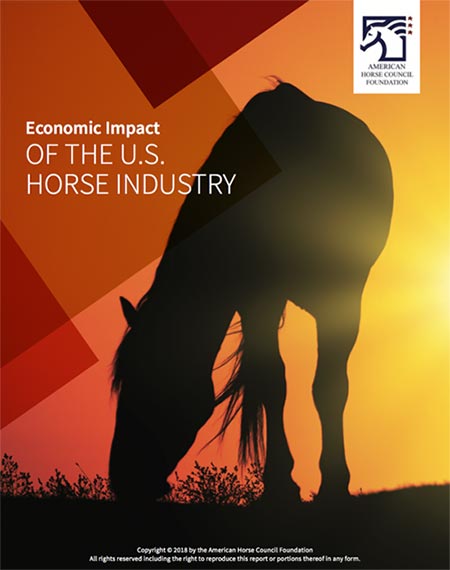
(Washington, DC) - While the equine industry as a whole generates approximately $122 billion in total economic value, it’s commonly thought that the “big three” that are the primary economic drivers: Recreation, Racing, and Competition. However, the American Horse Council Foundation (AHCF) felt it was also important to bring in a new sector of the industry’s economic impact: Working Horses.
“Traditional working horses remain an important part of the industry, and not just on American ranches,” said AHC President Julie Broadway. “In cities like New York and even here in Washington, DC, it’s not uncommon to have horses patrolling the streets, allowing individuals access to horses that they may not have otherwise had. Horses can also be found pulling carriages and adding charm to America’s cities and historic destinations.”
The Working Horse sector consists of equines used in segments such as mounted police units, carriage operations, equine assisted therapy programs, and lesson programs, which accounts for 8% of the equine population. The Working Horse sector supports more than 42,000 direct jobs and adds $1.9 billion in direct value to the U.S. economy. These direct impacts drive a further $2.7 billion in added value to the economy and create more than 28,000 jobs from indirect and induced effects.
The Recreation sector supports more than 162,000 direct jobs and adds $7.5 billion in direct value to the U.S. economy. Those direct impact drive a further $10.5 billion in added value to the economy, and create more than 110,00 jobs from both indirect and induced effects. Additionally, nearly 13 million households have participated in trail riding, with the vast majority of trail riders- 87%- utilizing public lands to ride on.
The Racing sector continues to have the largest economic impact: supporting more than 241,000 direct jobs and adding $15.6 billion in direct value to the U.S. economy. These direct impacts add $21 billion in value to the economy, and in total create more than 231,000 jobs from both indirect and induced effects. At Thoroughbred and Quarter Horse racetracks, approximately $11 billion in wagering occurred in 2016, and tracks had $1.2 billion in total purses. Harness racetracks also had significant wagering of $1.45 billion, with $423 million in total purses.
Finally, the Competition sector supports more than 241,000 direct jobs, and adds $11.8 billion in direct value to the U.S. economy. These direct impacts drive a further $16.5 billion in added value to the economy, and create more than 175,000 jobs from indirect and induced effects. Additionally, USEF, AQHA, NRHA and UPHA licensed approximately 6,313 competitions throughout 2016, utilizing 1,654 competition managers.
“While the Racing sector is still the number one performing segment of the industry in economic impact, the Recreation industry continues to be the largest based on horse population, as well as creating new enthusiasts by providing easy access to equine activities such as trail riding and lessons,” said Ms. Broadway. “It’s also important to note how every segment of the equine industry has created 38 million households with equine enthusiasts in the United States!”
































